Climbing Shoe Rand: What Is It and Why It Matters (2024)
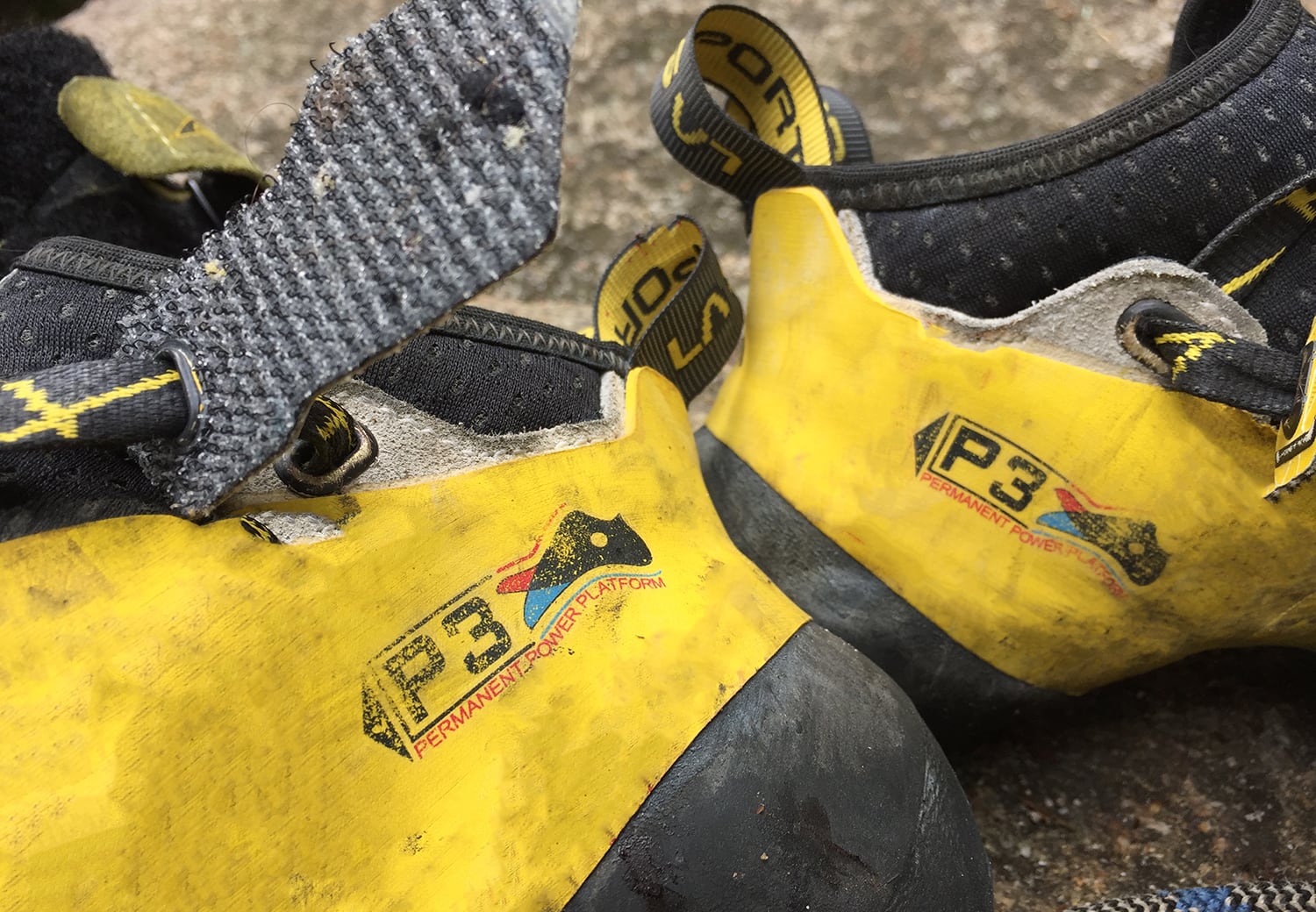
Published on: 09/29/2023
Whether you’re a seasoned climber or just starting out, the right gear can make all the difference in comfort and performance. One often overlooked, but essential component of your climbing shoes is the rand. In this article, we will see what a rand actually is, what are the different types, and how to care for it to keep your shoes in top condition.

What’s a Climbing Shoe Rand
The rand is the layer of rubber wrapping around the climbing shoe from heel to forefoot, connecting the upper and sole, providing protection from excess wear, and securing your foot with tension. The rand gives structure to the shoe and acts as a base onto which shoemakers add other elements like the outsole.
Note: sometimes cobblers refer to the rand as “toe cap.” That’s in the context of a resole. Indeed, the toe zone is often the place where the rand receives the most damage and start wearing out, which explains why professional resolers will use this term. More on this later in this article.
Climbing shoe rands are typically crafted from durable and high-friction rubber. Usually, the brand will use the same rubber as for the outsole to increase the lifespan of the shoe. However, because it’s relatively thin (about 2 mm of rubber), the rand, unlike the outsole, is not meant to be climbed on excessively. Fortunately, the toe area, the part of the shoe that receives the most weight from climbing, is protected by outsole rubber.
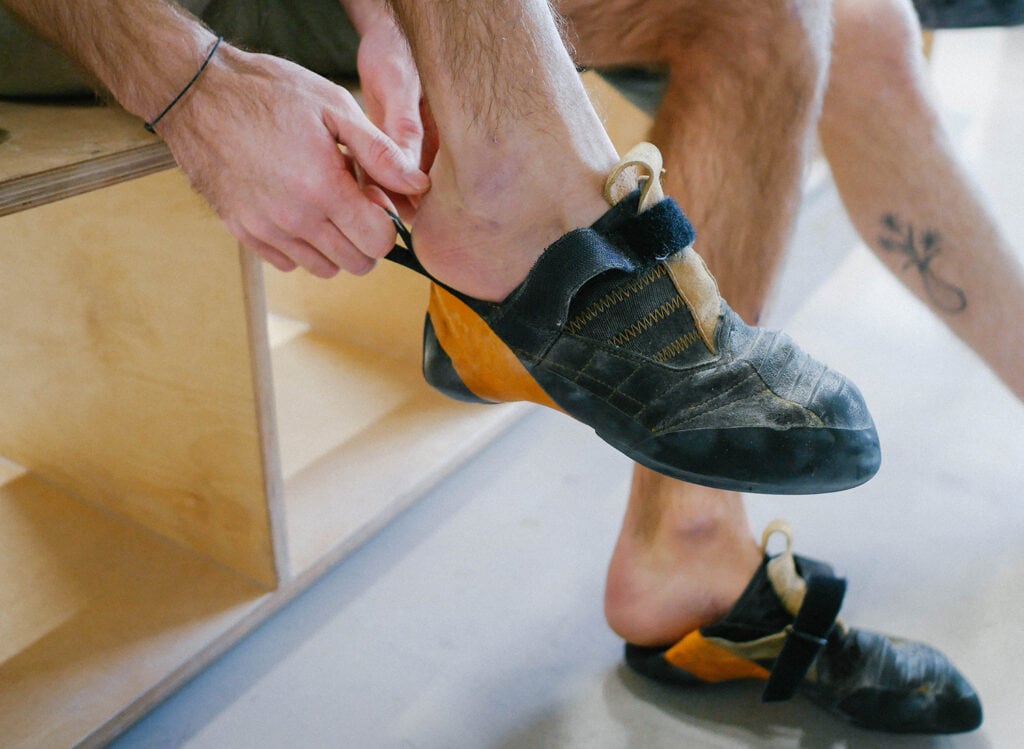
Types of Rands
There are various types of rands used in climbing shoes to enhance performance and durability. Each type has its unique design and features that cater to specific climbing styles and needs. Understanding the different rand types in rock climbing shoes can help you make an informed decision when it’s time to resole or purchase new shoes.
Slingshot Rand
The slingshot rand, developed by Five Ten in 1991, is a rubber strip that wraps around the heel and bottom of the foot for a secure fit and minimal stretch.
This design is a standard feature in most rock climbing shoes. It helps in generating tension throughout the shoe for technical moves requiring power and precision like edging and hooking.
P3 Platform
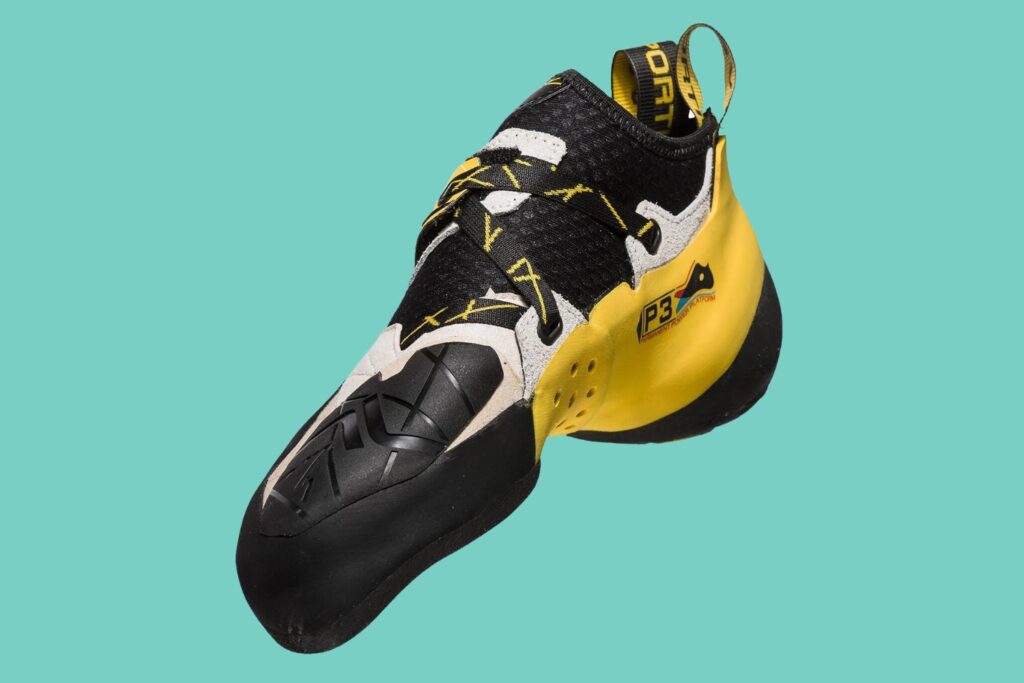
La Sportiva’s P3 platform is a more advanced and modern slingshot design. The critical difference with Five Ten’s rand configuration is that the rand starts from the toes and surrounds the whole foot.
The objective of P3 (Permanent Power Platform) tensioning system is two-fold:
- Improving performance through power-transmission;
- Preserving the shoe’s downturned shape for years to ensure it remains effective session after session.
P3 is a patented technology that you’ll find on most La Sportiva performance models.
Bi-Tension and PCB Rands
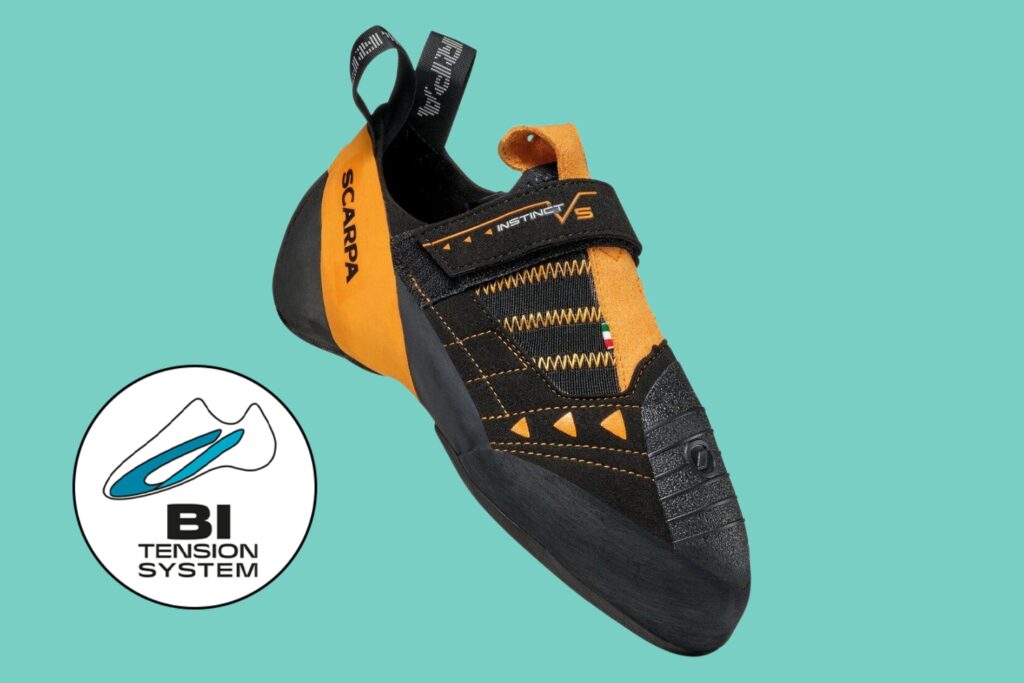
Scarpa has not one but two rand technologies. Bi-Tension uses a reverse slingshot design, actively drawing power from the toes instead of painfully pushing them forward. Scarpa’s goal is to combine comfort and performance.
On the other hand, PCB (Power Connection Band) is a similar rand system transferring power from the front to the back of the shoe, but it does so with a more minimal and lightweight design.
3-Force System
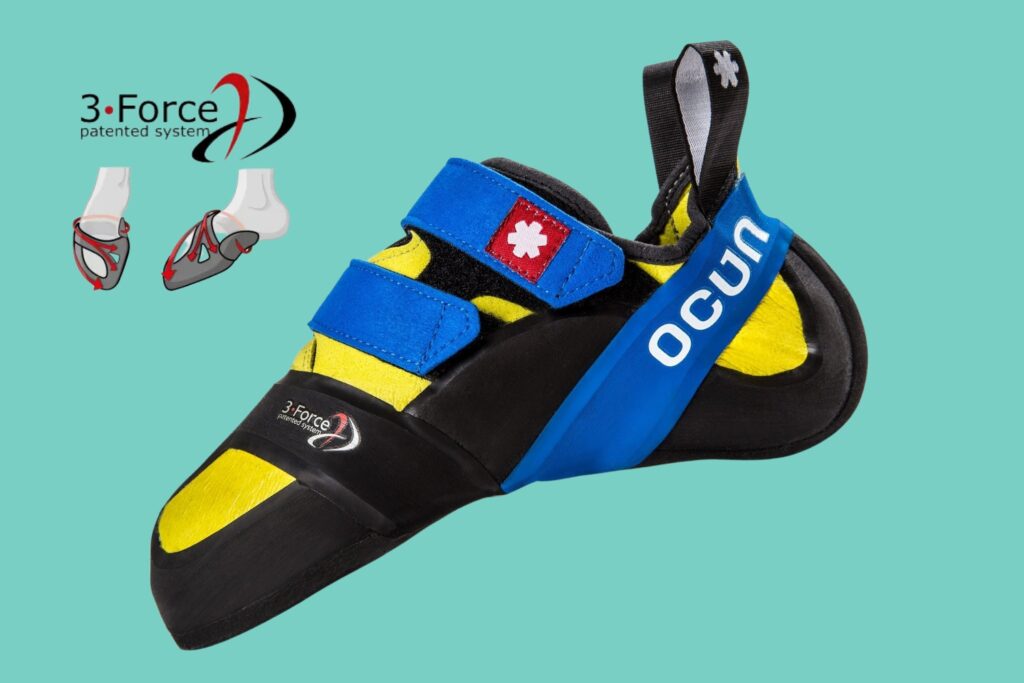
The 3-Force System, a patented design by Czech manufacturer Ocun, aims to equalize the weight and pressure for more precision when edging on tiny footholds.
It notably uses a rubber strap wrapping around the forefoot. Also, it includes a sticky rubber toepatch for hooking and pretension in the arch and heel.
V2 Rand
Boreal’s V2 Rand is a modern iteration of the slingshot rand seen in climbing shoes, utilizing two bands instead of the traditional single band. This design offers a precise fit and minimizes the amount of dead space in the front of the shoe.
How to Care for Your Rands
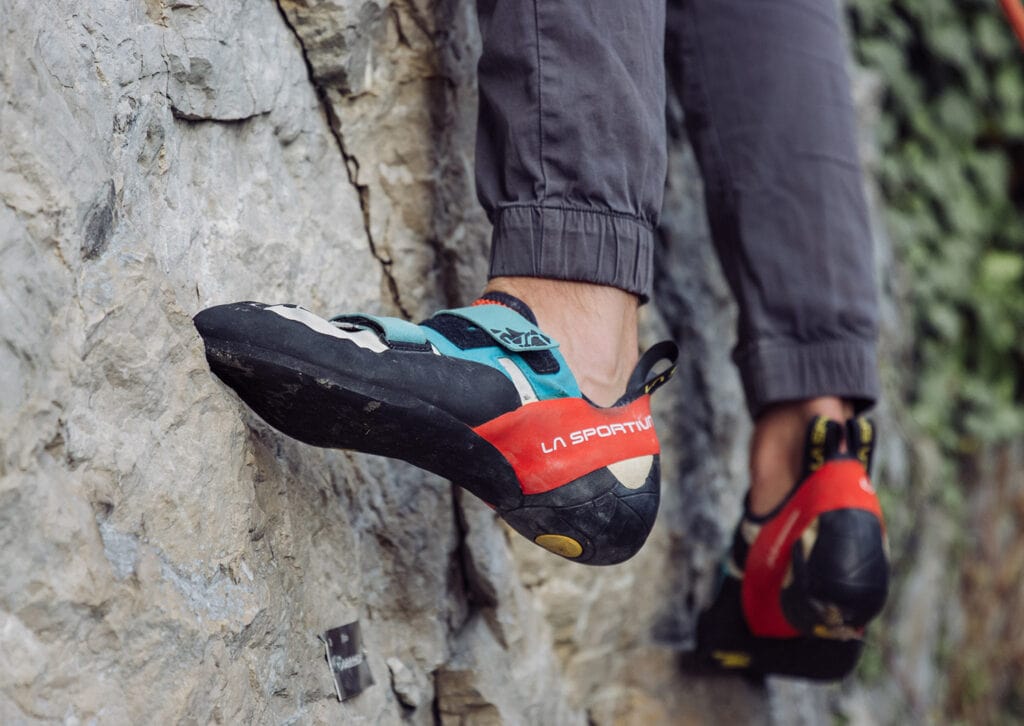
Proper maintenance of your shoes can significantly extend their lifespan and improve your performance. By taking care of your rands, you will be able to keep your favorite shoes longer, allowing you to focus on climbing instead of browsing for another pair.
In this section, we’ll share some tips to help you maintain the integrity of your climbing shoes long-term.
Shoe Cleaning and Proper Storage
Regular shoe care is essential for preserving your rand’s integrity and performance. Clean your climbing shoes with a shoe-friendly detergent and a brush, then allow them to air dry to prevent damage from excessive moisture.
Moreover, store your shoes in a cool, dry environment to avoid exposure to large temperature shifts and direct sunlight. By following these simple tips, you can extend the life of your shoes and maintain their performance on the rock face.
Resoling Before It’s too Late
One of the questions most climbers ask is: how long will my climbing shoes last?
Cobblers will tell you: damaging the rand is a sure way to shorten the life of your shoes. That’s because rock shoes can typically withstand to 3 to 6 resoles depending on the brand and model. However, a rand repair is a one-time thing. Indeed, it’s very difficult to repair the rand a second time without significantly altering the tension (and thus performance) of the shoes.
Therefore, it’s important to resole your shoes before the rand sustains significant damage. The rand rubber is thinner than the outsole’s. Once the outsole rubber wears out, you will start climbing on the rand. At this point, it won’t take long before you make a hole, leaving you no choice but to repair the rand.
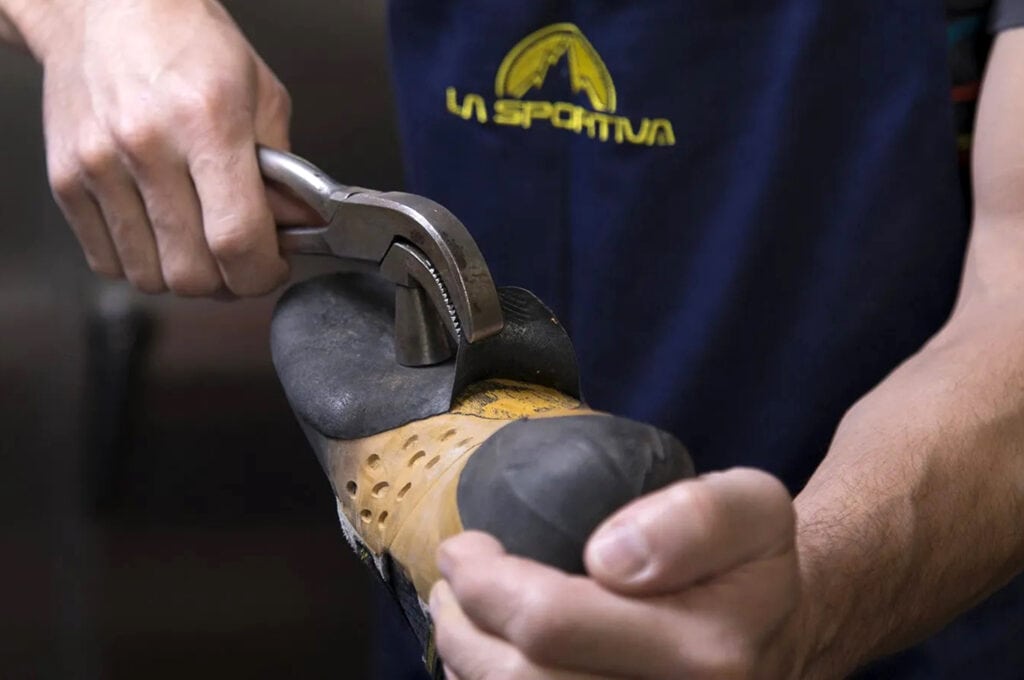
Rand Repair
A rand repair involves applying rubber patches called “toe caps” on the holes in the rand. In some cases, the resoler may need to replace the entire rand.
Also, note that you may need a rand repair even if there are no visible holes. That’s because some spots of the rand can become weaker and compromise the overall integrity of the shoe.
An experienced cobbler can assess whether you need a rand repair or a simple resole. Expect a $10-15 fee for a rand repair on top of the resole.
Final Thoughts
As you’ve seen in this article, the rand is a critical part of any climbing shoe. It becomes even more important on downturned models where the shoe must keep optimal tension to be effective.
Although similar at their core, rand designs can lead to slightly different experiences depending on how they balance performance and comfort. The best is to try different shoes and determine which one you like best. Of course, this may also depend on the type of climbing.
Last but not least, unlike the sole that can easily be replaced a few times, the rand is more fragile and typically can sustain only one repair, making it a vital component to carefully protect. Save money and resole before it’s too late!
